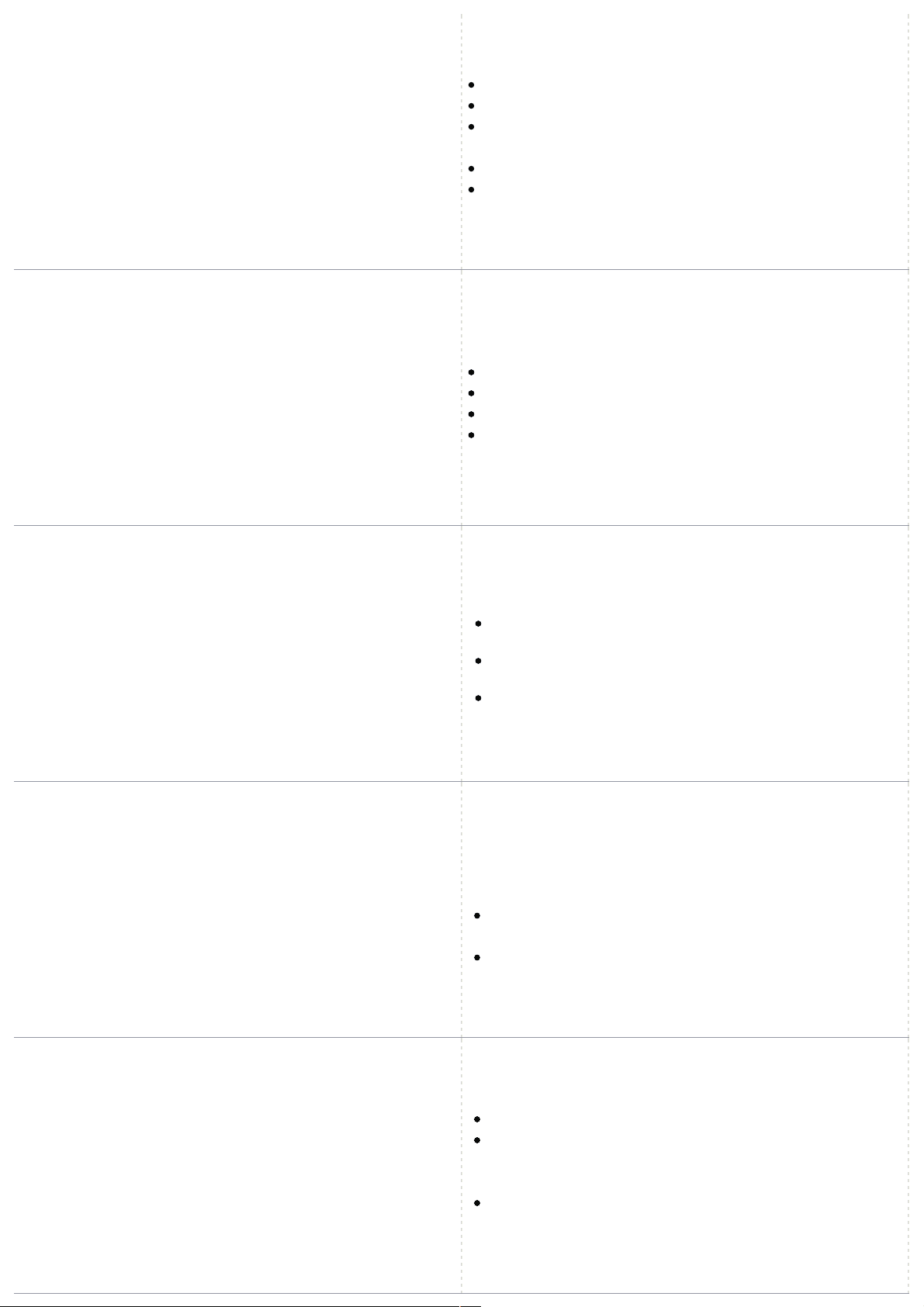
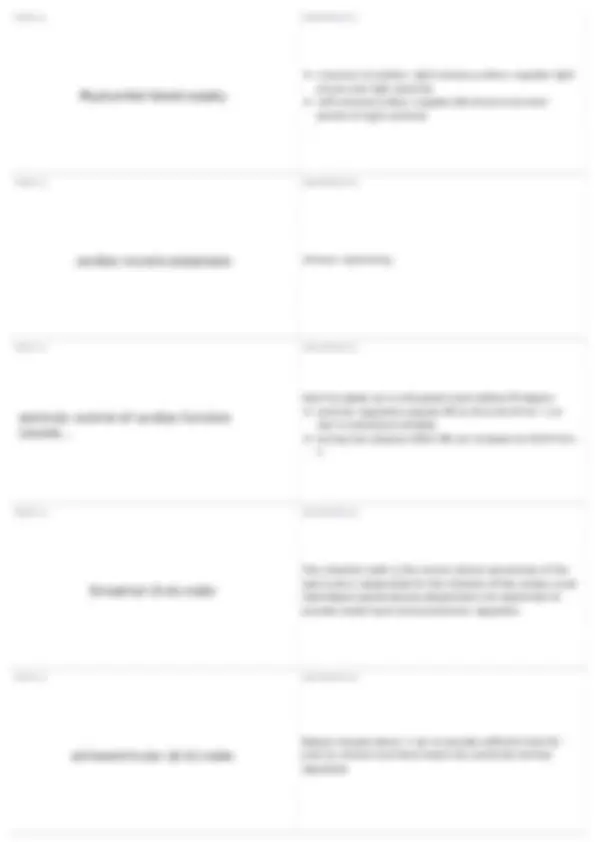
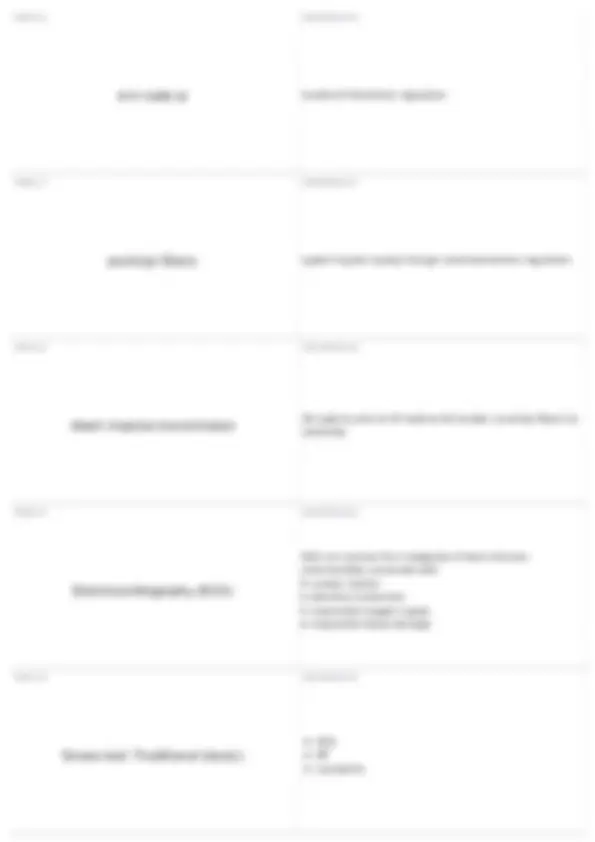

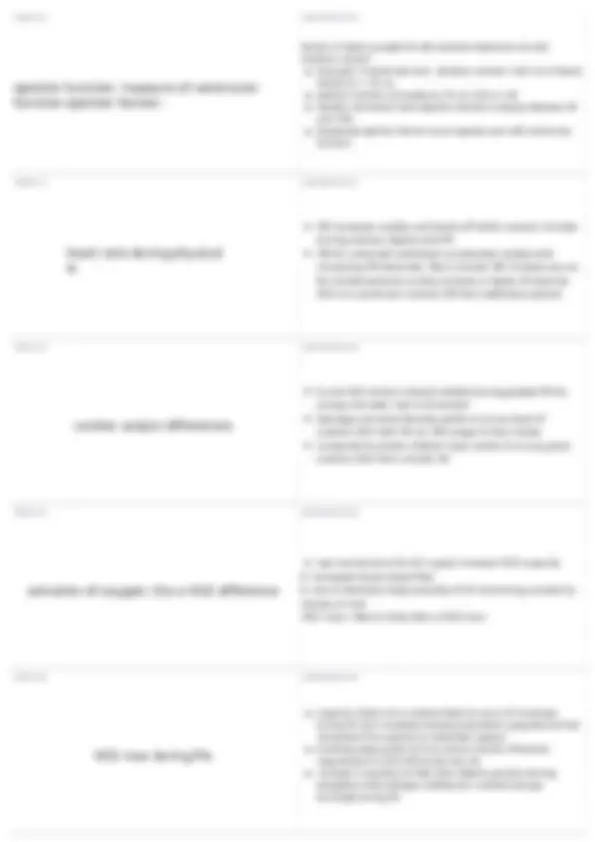
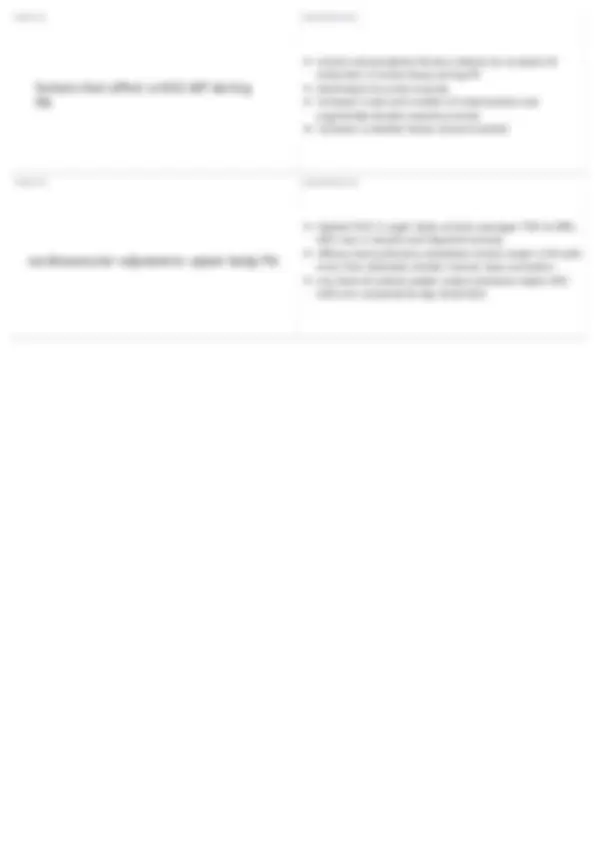


Study with the several resources on Docsity

Earn points by helping other students or get them with a premium plan


Prepare for your exams
Study with the several resources on Docsity

Earn points to download
Earn points by helping other students or get them with a premium plan
Community
Ask the community for help and clear up your study doubts
Discover the best universities in your country according to Docsity users
Free resources
Download our free guides on studying techniques, anxiety management strategies, and thesis advice from Docsity tutors
Detailed definitions and explanations of the circulatory system's functions during physical activity, its components, blood pressure measures, and the regulation of blood flow. It also covers the impact of physical activity on heart rate, cardiac output, and oxygen extraction.
What you will learn
Typology: Quizzes
1 / 9

This page cannot be seen from the preview
Don't miss anything!






Delivers oxygen to active tissue aerates blood returned to lungs transports heat, by-product of cellular metabolism from body core to skin delivers fuel nutrients to active tissues transports hormones the body's sophisticated chemical messengers TERM 2
DEFINITION 2 heart arteries capillaries veins TERM 3
DEFINITION 3 high-pressured tubing that conducts oxygen rich blood to tissues: no gaseous exchange takes place between arterial blood and surrounding tissues network of arteries and aterioles pumps blood from left ventricle into aorta and then throughout the body arteriole walls contain circular layers of smooth muscle that constrict or relax to regulate peripheral blood flow TERM 4
DEFINITION 4 Network of microscopic blood vessels so thin they provide only enough room for blood cells to squeeze through in single file. gases, nutrients and waste products rapidly transfer across thin, porous capillary walls velocity progressively decreases as blood moves toward and into capillaries TERM 5
DEFINITION 5 venules empty into superior and inferior vena cavae thin, membranous flap like valves spaced at short intervals within veins permit one-way blood flow back to heart venous system acts as active blood reservoir to either retard or enhance blood flow to systemic circulation
systolic blood pressure: highest arterial pressure measured after left ventricular contraction diastolic blood pressure: lowest arterial pressure measured during left ventricular relaxation TERM 7
DEFINITION 7 Rhythmic steady-rate activity; SBP increases in first few minutes then levels off DBP remains unchanged TERM 8
DEFINITION 8 it increases BP dramatically TERM 9
DEFINITION 9 PA at a given percentage of VO2 max increase BP more in upper body than lower body activity TERM 10
DEFINITION 10 SBP decreases below pre-activity levels for up to 12 hours in normal and hypertensive subjects following sustained light to moderate intensity PA
bundle of Hisintrinsic regulation TERM 17
DEFINITION 17 speed impulse rapidly through ventriclesintrinsic regulation TERM 18
DEFINITION 18 SA node to atria to AV node to AV bundle ( purkinje fibers) to ventricles TERM 19
DEFINITION 19 ECG can uncover four categories of heart function abnormatlites concerned with: cardiac rhythm electrical conduction myocardial oxygen supply myocardial tissue damage TERM 20
DEFINITION 20 ECG BP symptoms
symptoms US TERM 22
DEFINITION 22 ECG BP symptoms radioactive die (thallium) TERM 23
DEFINITION 23 ECG BP symptoms US and or Die TERM 24
DEFINITION 24 sympathetic influence releases epinephrine, norepinephrineresults in tachycardia Parasympathetic influences: releases acetylcholine and results in bradycardia TERM 25
DEFINITION 25 central command provides greatest control over HR: exerts its effect during PA at rest and immediate pre-PA period produces anticipatory HR particularly apparent prior to all out physical effort
upon sympathetic activation, adrenal glands release epinephrine and norepinephrine to cause general constrictor reponse except in heart and skeletal muscle blood vessels TERM 32
DEFINITION 32 cardiac output most important indicator of circulatory system functional capacity to meet PA demands cardiac output =heart rate times stroke volume TERM 33
DEFINITION 33 enhanced cardiac filling in diastole followed by more forceful systolic contraction neurohormonal influence causes normal ventricular filling with forceful ejection and emptying during systole training adaptations expand blood volume and reduce resistance to blood flow in peripheral tissues TERM 34
DEFINITION 34 greater ventricular filling in diastole during the cardiac cycle from increased vernous return TERM 35
DEFINITION 35 resistance to flow from increased systolic pressure increase in end-diastolic volume stretches myocardial fibers, causing powerful ejection strokes as the heart contracts expels normal SV plus additional blood that enters ventricles and stretches the myocardium frank-starling law of the heart describes this phenomenon as applied to the myocardium
faction of blood pumped fro left ventricle relative to its end- diastolic voluem example: if ventricular end - diastolic volume =110 mL of blood hearts SV = 70 mL ejection function computes as 70 mL /110 or. healthy individuals have ejection fractions ranging between 50 and 70% depressed ejection fraction accompanies poor left ventricular function TERM 37
DEFINITION 37 HR increases rapidly and levels off within several minutes during submax steady rate PA HR for untrained individuals accelerates rapidly with increasing PA demands- Much smaller HR increase occurs for trained persons so they achieve a higher of exercise VO2 at a particular submax HR than sedentary person TERM 38
DEFINITION 38 Q and VO2 remain linearly related during graded PA for young and older men and women: teenage and adult females perform at any level of submax VO2 with 5% to 10% larger Q than males compared to adults children have similar Q at any given submax VO2 from smaller SV TERM 39
DEFINITION 39 two mechanisms for O2 supply increase VO2 capacity increased tissue blood flow use of relatively large quantity of O2 remaining unused by tissues at rest VO2 max= Max Q times Max a-VO2 max TERM 40
DEFINITION 40 capacity of each dL or arterial blood to carry O2 increases during PA from increased hemoconcentration (progressive fluid movement from plasma to interstitial spaces) diverting large portion of Q to active muscles influences magnitude of a-VO2 diff during max PA increase in capillary to fiber ratio reflects positive training adaptation that enlarges interface for nutrient and gas exchange during PA